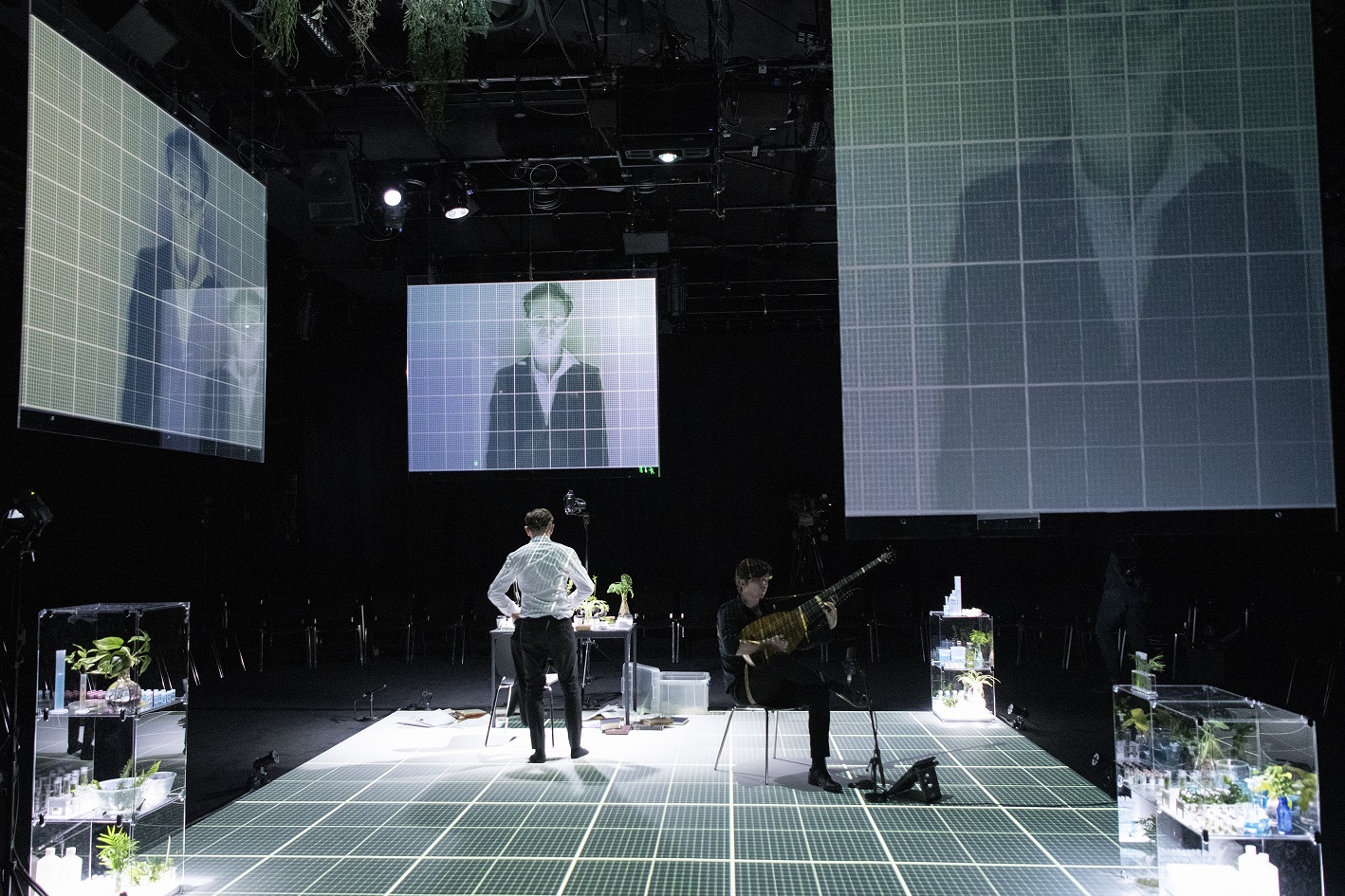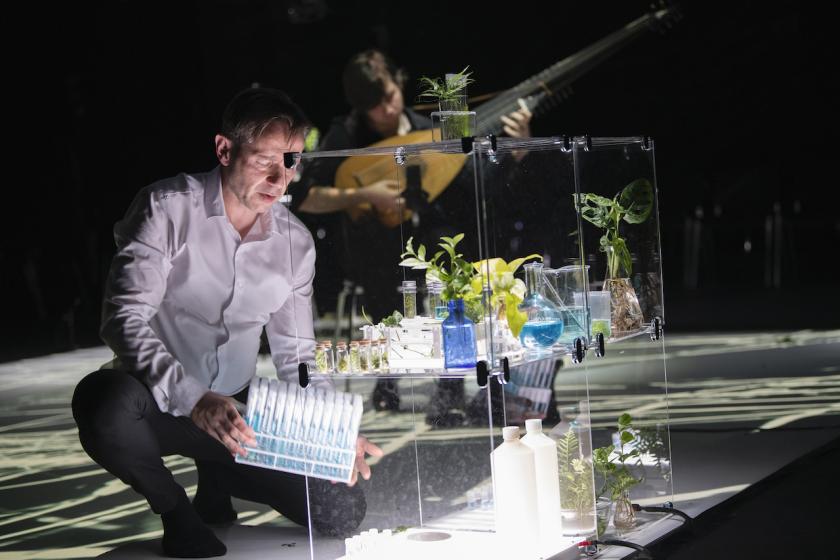We enter the Barbican Pit as if visiting an apothecary. On the walls of the passage approaching it there are scientific diagrams and documents, while the stage itself is set up with glass cases filled with different potions and experiments.
A figure lies prostrate on the floor lit by diagonal slants of light; next to the figure a lutenist regards the audience with a meditative gaze. In the background recorded voices deliver snippets of observation on the state of melancholy. To be ill at ease, according to Robert Burton's The Anatomy of Melancholy, was quite literally to be in a state of disharmony. “A mind suffers as a lute out of tune; if one string or organ be distempered all the rest miscarry.”
Countertenor Iestyn Davies (main picture) has been recognised for years as the supreme interpreter of the Elizabethan composer John Dowland. Here he and the acclaimed French lutenist Thomas Dunford have collaborated with innovative director and video artist Netia Jones for a powerful three-dimensional meditation on melancholy. The first song emerges out of total darkness; a superb rendering of Dowland’s “In Darkness Let Me Dwell’, in which Davies fully mines the emotion from its tortured lyrics and exquisite dissonances. Dowland was himself a lutenist, something made manifest in the complexity of the lute part which becomes not just an accompaniment but part of a dialogue that amplifies the suffering at the same time as it explores it. To be melancholy, of course, in the Elizabethan era, was a sophisticated philosophical pose – for all its world-weariness it implied an intellectual and emotional dynamism, a skill at filleting the dark heart of human existence. Hamlet remains the most famous example of Elizabethan melancholy, yet Dowland himself – who famously punned "semper Dowland, semper dolens" (always Dowland, always suffering) – became a publishing phenomenon through meticulously crafted songs that were simultaneously models of restraint and anguished catharsis.
To be melancholy, of course, in the Elizabethan era, was a sophisticated philosophical pose – for all its world-weariness it implied an intellectual and emotional dynamism, a skill at filleting the dark heart of human existence. Hamlet remains the most famous example of Elizabethan melancholy, yet Dowland himself – who famously punned "semper Dowland, semper dolens" (always Dowland, always suffering) – became a publishing phenomenon through meticulously crafted songs that were simultaneously models of restraint and anguished catharsis.
Three authorities have been drawn on for inspiration here – as well as Burton’s The Anatomy of Melancholy we hear recorded musings from the writings of Sigmund Freud and the contemporary psychoanalyst Darian Leader. In Jones’s staging we watch Davies deal with his melancholy as if it were a scientific condition that he should permanently be investigating. Wracked by grief he’s constantly searching through the glass cabinets for herbs and pills. At points his image is projected onto a backdrop of graph paper as if he himself were the result of an experiment.
Despite its elegant and intelligent execution, there are moments when it feels that the rich emotional palate of Davies’ voice can convey more in a few notes than a whole array of props and video projections. Take his performance of Dowland’s “Come Again Sweet Love” in which his tone ranges from a shadowy subtle vibrato in the lower notes to pure liquid gold as he hits the higher register. In these top notes alone there’s the sense of the release of a whole world of pain. For a moment all the artifice and hypothetical scaffolding fall away and the music eclipses everything.
Dunford, too – whose other collaborators include the brilliant innovative harpsichordist Jean Rondeau – is a man in his element, setting up musical textures and resonances that simultaneously soothe and provoke. The thoughtfulness with which he shapes the songs’ harmonic structures is offset by the heartfelt delicacy of the more lyrical passages. When he plays the bass notes every molecule in the lute seems to resonate, adding a whole new echoing layer of richness to the music as it evolves.
While the music triumphs, overall this is a beautifully conceptualised chamber piece with many inspired touches in the staging. There are moments in Jones’s video projections that evoke Bill Viola’s work – not least during the performance of “Time stands still”. This is accompanied by film of Davies, submerged in water, a repeated trope used by Viola in his investigations of the human condition. All the while, recorded spoken commentaries interweave subtly with Dowland’s enduring musical observations on the wounded soul.
In his Anatomy Burton wrote, “I hear news every day, and those ordinary rumours of war, plagues, fires, inundations, thefts, murders, massacres… cities besieged… petitions, lawsuits, pleas… [n]ew books… pamphlets… paradoxes, opinions, schisms, heresies." A world, in other words, that despite the slower travel of information could feel as overwhelming and apocalyptic as our own. A world then, in which – whether it was disappointment in love or despair at the human condition – sometimes the best recourse was to step back and create a moment of stillness. To acknowledge its imperfections by turning the contemplation of imperfection itself into an art form. No wonder this music speaks so resonantly to us today.













Add comment